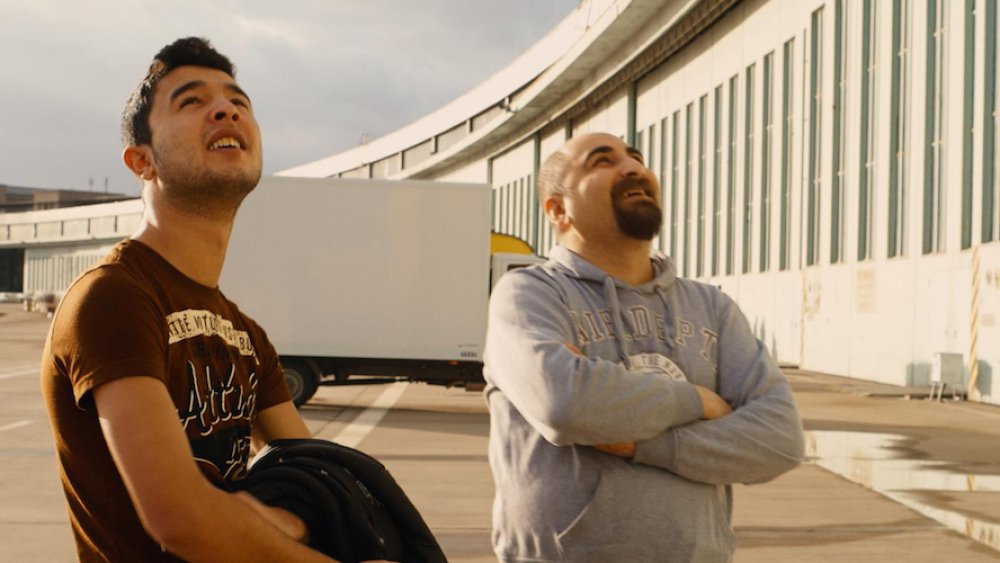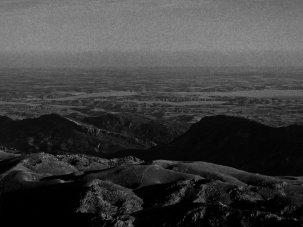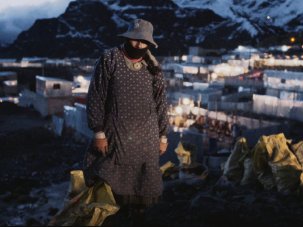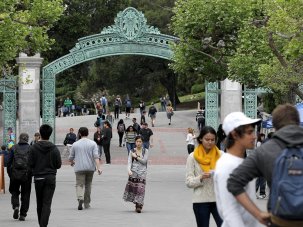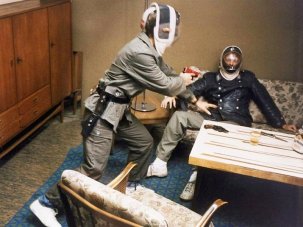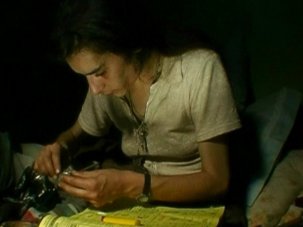“Words have no power to impress the mind without the exquisite horror of their reality.”
— Edgar Allan Poe
Forty years after its launch under the aegis of none other than Jean Rouch, who changed the documentary festival’s name from Rencontres internationales du cinéma direct, Cinéma du Réel carried off its onerous titular allusion with ingenuity. First by admitting that today more than ever the ontological definition of reality and ‘the real’ cannot be possibly univocal. And second by making visible how different reality looks, feels and deceives depending on the perspective of the filmmaker. Consequently, the festival on the one hand accommodated the complexity and contradictions that documentary cinema reflects and produces today, and on the other reclaimed the possibility to chronicle reality through its artistic elaboration.
The 40th Cinéma du Réel International Documentary Film Festival ran 23 March–1 April 2018 in Paris, France.
At a time when the self-centred reality of the ‘I’ seems inevitable and the possibility of a collective ‘we’ unattainable, “one of the biggest threats is the fact that the ability to empathise is considered a weakness,” observed Charles Burnett in his contribution to the festival’s publication. The disturbing ability to engage with reality without allowing the establishment of an sensitive bond between the filmmaker and his subject is the salient characteristic of a lot of new, trendy documentary cinema. The most vital works seen at Cinéma du Réel, however, reclaimed the right to empathise, opposing the reactionary post-humanism popularised by the Harvard Sensory Ethnography Lab and its even lamer epigones.
Diametrically opposed to such fashionable detachment is the new work-in-progress by Éric Baudelaire, 128 Weeks at Dora Marr Junior High School (128 Semaines au collège Dora Maar). Having been invited by a junior high school in the Parisian suburb of Saint-Denis to conceive a film about the institution, the director decided to involve the young students in the production. It’s in fact the pupils we first see giving the director a tour of the school, which the spectator sees through their eyes, not the teachers’ nor the dean’s. This establishing shot effectively introduces Baudelaire’s self-effacing approach, one wherein the students are given ample space for self-expression and, indeed, directorial choices.
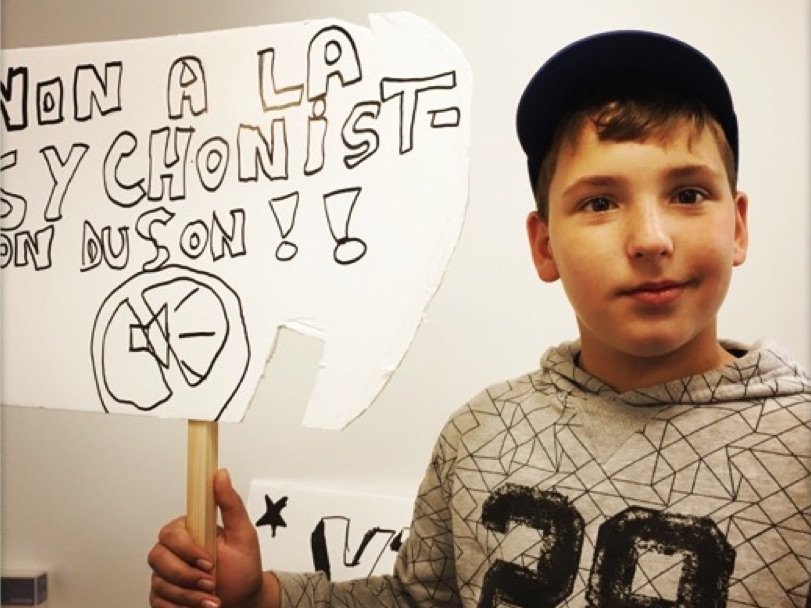
128 Semaines au collège Dora Maar (2018)
The three instalments of the film that Baudelaire showed us are the best cinematic exemplification of what the British architect and teacher Colin Ward believed to be the essence of an anti-authoritarian education. “Every place is a learning place,” was Ward’s conviction, and we see that reflected and enacted in this film where pupils, more than teachers and perhaps the director himself, seem able to negotiate and re-articulate the possibilities of the different situations they find themselves in. Baudelaire films and enables the possibility for education to occur outside the school walls. Instead of exercising his authority as a ‘film teacher’, he simply shares his knowledge with his students who are put in a situation where self-determination rather than obedience is what is demanded of them. 128 Weeks at Dora Marr Junior High School explores the pedagogical potential of cinema while showing the insufficiency of the scholastic institution hierarchically organised. It shows the extent to which creativity is systematically repressed – by creating a film workshop where children on the cusp of adolescence are, for once, allowed to freely articulate and organise themselves.
Mostly preposterous, emotionally blackmailing and of no political significance, the ‘refugee crisis’ documentary has sadly become a genre in its own right. Inversely proportional to the number of documentaries on this topic churned out over the past few years is the understanding of a phenomenon of criminal proportions, of which so-called refugees, whether escaping war or poverty, are the expendable victims.
A welcome exception to this abominable trend was Karim Aïnouz’s THF – Central Airport (Zentralflughafen THF), a documentary that without giving any context manages to illuminate the historical and political implications of its subject matter. Opened in 1923 and expanded by Hitler into the biggest European airport of the time, Berlin’s Tempelhof was closed in 2008 but became a centre of temporary detention for refugees in 2015 following Angela Merkel’s much-criticised wilkommenspolitik, when around one million refugees were allowed to enter Germany. Bitter historic ‘ironies’ aside, the airport now holds up an inclement mirror to the callous hypocrisy of Fortress Europe. That a government with no qualms when it comes to selling weapons to various authoritarian countries (deeply involved in the Syrian conflict) is lauded for accepting some of those weapons’ ‘collateral damage’ speaks volumes about the cruel absurdity that nowadays passes for normality.
But the focus of Zentralflughafen THF is only inwardly political and remains strictly visual on the outside (the director is a visual artist, whatever that means). Through sharp, analytical observation the director captures the schizophrenic violence of European democracy with beautifully framed images that never feel gratuitous. While the former runways of the airport have now become a public park for Berliners, its fenced-in hangars serve as shelters for refugees while they wait in a bureaucratic limbo with boredom and memories as their only companions. The repurposed airport microcosmically replicates the xenophobic logic that now governs the Old continent, be it of the ‘tolerant’ (Germany, France) or the overtly fascistic (Hungary, Poland) variety.
By no means an exclusively European circumstance, authoritarian rule has been regularly deployed whenever social discontent reaches levels that liberal democracies can no longer contain. Latin America has historically served as a testing ground for the most brutal forms of proxy war, regime change and military dictatorship that have secured its resources and (cheap) labour force to the highest bidder. What military juntas left behind was not only a legacy of violence, but also a crucial challenge to the understanding of national memory, of what it means to forget and to forgive.
In 1986, when the Uruguayan parliament voted a bill granting amnesty for the crimes committed by the military junta from 1975 to 1985, the Swiss filmmaker Kristina Konrad had just moved to Montevideo. Public outrage at the proposed law led to a referendum where Uruguayans were asked whether to accept the new law or not. It was then that the filmmaker took to the streets of Montevideo and beyond to ask citizens from all walks of life what they thought of the referendum.
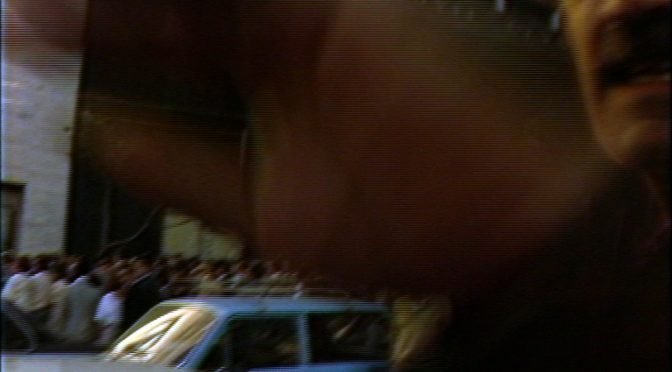
One or Two Questions (Unas preguntas, 2018)
What emerges in One or Two Questions (Unas preguntas), a captivating 237 minutes of edited interviews interspersed with electoral television ads from the era, is a mosaic of political sociology. Most painful is the realisation that no crime, however heinous, will ever be remembered univocally nor unanimously. Though careful to assign screen time to both positions even-handedly, the documentary lays open the political implications of a debate where the struggle between the convenience of amnesia and the laceration of remembrance is played out in real time. Edited 30 years after it was shot, Konrad’s film exemplifies the relevance that history and archives play in contemporary cinema when consciously deployed in a meaningful context and not as mere vintage objects.
Winner of the festival Scam International (Civil Society of Multimedia Authors) award, Leonor Teles’s Ashore (Terra Franca) marks the debut of a promising director, one whose very young talent feels particularly spry. Proof of her originality is evinced in the very treatment of her subject matter: a working family living in a suburb of Lisbon.
As customary and repetitive as it may sound to those who have had their fill of Pedro Costa and his hackneyed copycats, the film completely overturns the aesthetic clichés that recent Portuguese cinema has inflicted on itself. For once the humble surroundings in which the film takes place are not turned into a vacuous art installation and its protagonist into the passive muse of a vain aesthete. Quite the contrary, the fisherman that the film follows for most of its runtime emanates a charisma of his own, which Teles shares with the spectator (with the help of a glorious soundtrack).
An ordinary life is here rendered extraordinary not by transfiguring it, but by dwelling on those emotional details that infuse daily routine with an epic depth. Reality is not kept at bay by aesthetic prejudice, the director does not try to project on it her own interpretation but listens to it intently and, most vitally, never places herself above it. This horizontal approach allows for a dialogical exchange where the barriers between the director and those in front of her camera are negotiated and the real, rather than an ontological entity, appears in the form of the admission of subjectivity and its inevitable imperfection.
-
The Digital Edition and Archive quick link
Log in here to your digital edition and archive subscription, take a look at the packages on offer and buy a subscription.




